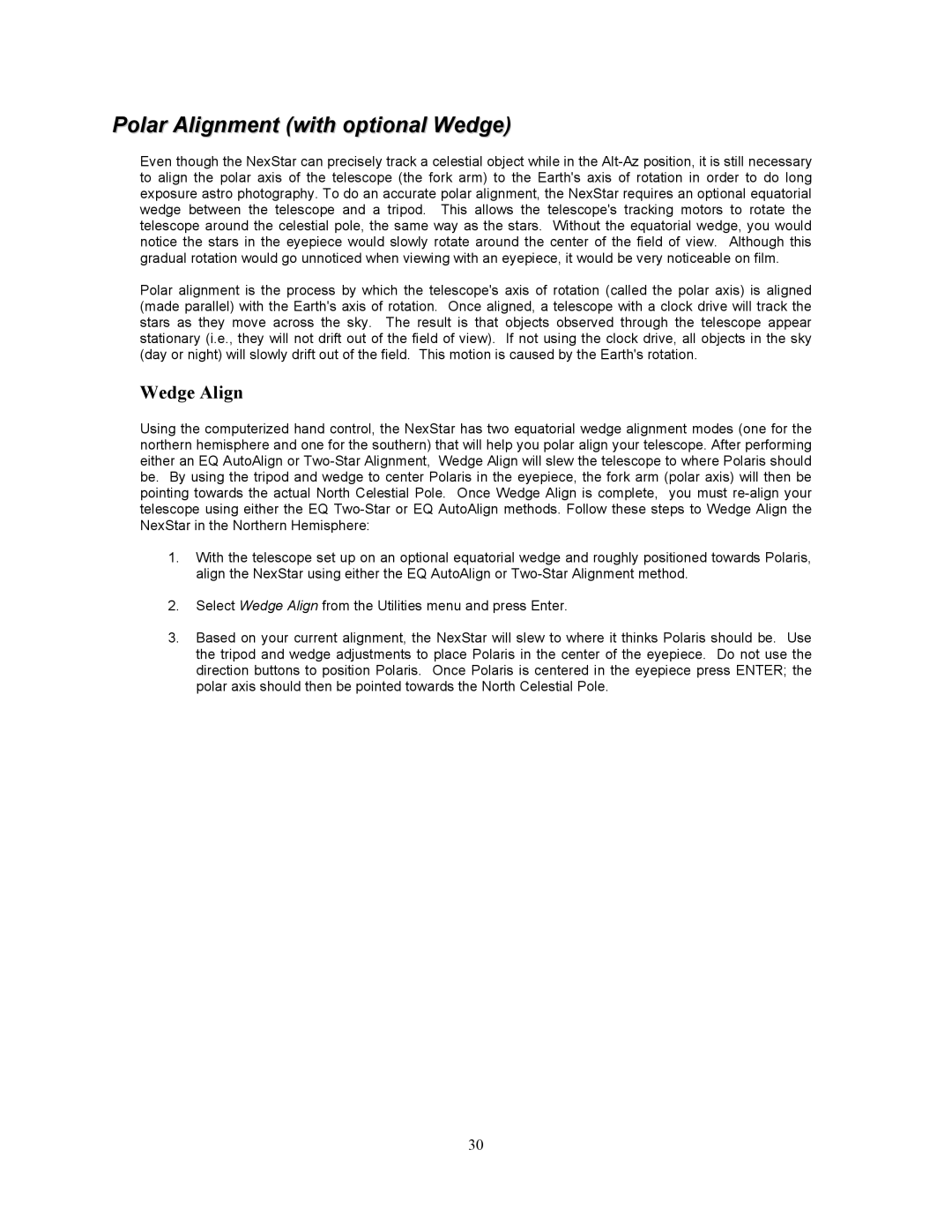Polar Alignment (with optional Wedge)
Even though the NexStar can precisely track a celestial object while in the
Polar alignment is the process by which the telescope's axis of rotation (called the polar axis) is aligned (made parallel) with the Earth's axis of rotation. Once aligned, a telescope with a clock drive will track the stars as they move across the sky. The result is that objects observed through the telescope appear stationary (i.e., they will not drift out of the field of view). If not using the clock drive, all objects in the sky (day or night) will slowly drift out of the field. This motion is caused by the Earth's rotation.
Wedge Align
Using the computerized hand control, the NexStar has two equatorial wedge alignment modes (one for the northern hemisphere and one for the southern) that will help you polar align your telescope. After performing either an EQ AutoAlign or
1.With the telescope set up on an optional equatorial wedge and roughly positioned towards Polaris, align the NexStar using either the EQ AutoAlign or
2.Select Wedge Align from the Utilities menu and press Enter.
3.Based on your current alignment, the NexStar will slew to where it thinks Polaris should be. Use the tripod and wedge adjustments to place Polaris in the center of the eyepiece. Do not use the direction buttons to position Polaris. Once Polaris is centered in the eyepiece press ENTER; the polar axis should then be pointed towards the North Celestial Pole.
30
